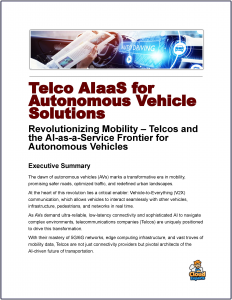Smart China | The Future of Transportation
These advancements are not only reshaping how people move through cities but also setting a global benchmark for efficient, eco-friendly urban environments.
 China is at the forefront of a transportation revolution, leveraging cutting-edge technology to transform urban mobility.
China is at the forefront of a transportation revolution, leveraging cutting-edge technology to transform urban mobility.
With rapid urbanization, a massive population, and ambitious sustainability goals, the country is pioneering innovative solutions like self-powered trams and next-generation transport systems.
These advancements are not only reshaping how people move through cities but also setting a global benchmark for efficient, eco-friendly urban environments.
Autonomous Trams
One standout innovation is the development of self-powered trams, such as the Autonomous Rail Rapid Transit (ART) system, often referred to as a “trackless tram.”
First introduced in Zhuzhou, Hunan, in 2017, this system operates without traditional rails, using sensors, cameras, and virtual track guidance painted on roads. Powered by lithium-titanate batteries or supercapacitors, these trams can recharge in as little as 30 seconds during passenger stops, achieving a dynamic balance of energy consumption and supply.
Capable of speeds up to 70 km/h and carrying up to 500 passengers, the ART combines the flexibility of buses with the capacity of trams, all at a fraction of the cost of conventional rail infrastructure. Cities like Yiwu and Harbin have begun adopting this technology, with plans for wider rollout across southern China, where its adaptability to varied urban layouts shines.
Beyond trackless trams, China is pushing boundaries with other next-generation solutions. The country boasts the world’s largest fleet of electric buses—over 400,000 as of recent estimates—operating in cities like Shenzhen, which fully electrified its bus fleet by 2017. These buses, paired with extensive charging networks, reduce urban air pollution and noise, aligning with China’s goal to peak carbon emissions before 2030.
Meanwhile, autonomous vehicle technology is advancing rapidly, with companies like Baidu, WeRide, and Pony.ai testing self-driving taxis and minibuses in cities such as Wuhan, Guangzhou, and Shenzhen. Wuhan, for instance, has deployed nearly 500 robotaxis, aiming for economic viability by late 2024, while Shenzhen launched its first autonomous bus route in 2023.
These innovations are underpinned by smart city initiatives, like Hangzhou’s “City Brain” platform, which uses AI to optimize traffic flow, integrating public transit with micromobility options like bike-sharing. This holistic approach enhances efficiency, reduces emissions, and improves quality of life in densely populated areas. China’s government supports this transformation with robust policies, including subsidies for electric vehicles and pilot zones for autonomous tech, creating a fertile ground for experimentation and scaling.
The impact on urban environments is profound. Self-powered trams and electric buses cut reliance on fossil fuels, easing congestion and pollution in cities where traffic once choked streets. Autonomous systems promise safer, more efficient travel by reducing human error and optimizing routes in real time.
China’s transportation revolution is a bold reimagining of mobility, blending self-powered systems, autonomy, and smart infrastructure. As these technologies mature and spread, they could redefine urban living worldwide, offering a model for how cities can move smarter, greener, and faster into the future.
Role of Telcos in Enabling Transportation Advances
Self-powered trams like the Autonomous Rail Rapid Transit (ART) and autonomous vehicles (e.g., robotaxis and buses) depend on continuous, low-latency communication for navigation, obstacle detection, and coordination. Telcos provide the high-bandwidth, ultra-reliable networks—such as 5G—that enable vehicle-to-vehicle (V2V) and vehicle-to-infrastructure (V2I) communication.
For instance, the ART’s virtual track guidance system, powered by sensors and cameras, requires real-time data feeds to adapt to urban traffic conditions, which telcos facilitate through dense network coverage.
China’s smart city initiatives, like Hangzhou’s “City Brain,” integrate transport systems with AI-driven traffic optimization. Telcos supply the infrastructure to transmit vast amounts of data from trams, buses, and road sensors to centralized platforms for analysis. This ensures seamless coordination between transport modes, reducing congestion and enhancing efficiency in cities like Shenzhen and Guangzhou, where real-time passenger information systems are already in use.
Next-generation transport solutions rely on Internet of Things (IoT) devices—sensors in trams, charging stations, and road infrastructure—to monitor performance, energy use, and passenger flow. Telcos enable this by deploying networks capable of handling millions of connected devices, ensuring that data from these endpoints reaches operators and city planners instantly. For example, electric bus fleets in Shenzhen depend on IoT for battery management and route optimization, all underpinned by telco networks.
Technology Upgrades Telcos Need to Implement
To meet the demands of these transportation advancements, telecommunications providers must upgrade their infrastructure and adopt cutting-edge technologies. Here’s what they’d need to focus on:
5G and Beyond (6G Readiness)
5G’s low latency (as low as 1 millisecond), high bandwidth (up to 10 Gbps), and massive device connectivity (up to 1 million devices per square kilometer) are essential for autonomous trams, robotaxis, and real-time traffic systems. Looking ahead, 6G—already in early development in China—promises even greater speeds and AI-integrated networks, critical for future scalability.
Telcos must expand 5G small-cell deployments in urban areas, especially along transit routes, and invest in millimeter-wave spectrum for ultra-high-speed zones. Preparing for 6G will require research into terahertz frequencies and advanced beamforming to support denser, faster networks.
Edge Computing Integration
Autonomous systems and smart traffic platforms need instant data processing to make split-second decisions—like an ART tram rerouting to avoid an obstacle. Edge computing reduces latency by processing data closer to the source, rather than relying on distant cloud servers.
Telcos need to deploy edge nodes near transport hubs, roads, and rail lines, integrating them with 5G base stations. This requires investment in micro-data centers and partnerships with cloud providers to handle the computational load.
Network Slicing for Dedicated Bandwidth
Transport systems need guaranteed bandwidth to prioritize critical operations (e.g., safety signals over passenger Wi-Fi). Network slicing, a 5G feature, allows telcos to allocate virtual network segments for specific uses, ensuring reliability for transit applications.
Telcos must implement software-defined networking (SDN) and network function virtualization (NFV) to dynamically manage slices, tailoring them to the needs of trams, buses, or drone taxis in real time.
Enhanced Cybersecurity
As transport systems become more connected, they’re vulnerable to cyberattacks that could disrupt operations or compromise safety. Telcos must protect the data flowing between vehicles, infrastructure, and control centers.
Deploying advanced encryption, AI-driven threat detection, and zero-trust architectures is essential. Telcos will also need to collaborate with transport authorities to establish secure communication protocols, like those used in Shenzhen’s autonomous bus trials.
Massive IoT Connectivity
The proliferation of sensors in electric buses, trams, and smart roads demands networks that can handle exponential device growth without congestion. Telcos should adopt Narrowband IoT (NB-IoT) and LTE-M protocols alongside 5G, optimizing for low-power, wide-area coverage. This requires upgrading base stations and core networks to manage diverse IoT traffic efficiently.
High-Capacity Backhaul for High-Speed Rail and Urban Hubs
Maglev trains and busy urban transit nodes generate massive data volumes (e.g., video surveillance, passenger Wi-Fi), requiring robust backhaul to connect local networks to the internet. Telcos need to expand fiber-optic backhaul infrastructure along rail lines and in cities, supplemented by microwave links in remote areas. Upgrading to 400Gbps or 800Gbps fiber systems will future-proof capacity.
Spectrum Expansion and Optimization
The growing number of connected transport devices strains existing spectrum resources, risking interference and slowdowns. Telcos must acquire additional spectrum bands (e.g., mid-band 3.5 GHz or C-band) and implement dynamic spectrum sharing to maximize efficiency. Collaboration with regulators to reserve frequencies for critical transport use, as seen in some rail systems globally, could also be key.
Putting It Together
Telcos in China, like China Mobile, China Telecom, and China Unicom, are already leaders in 5G deployment, with over 3 million base stations nationwide as of early 2025. Their role in transportation goes beyond connectivity—they’re enablers of a data-driven, autonomous, and sustainable urban future.
By upgrading to 5G-plus technologies, integrating edge computing, and ensuring cybersecurity, they can support the real-time demands of self-powered trams like the ART, sprawling electric bus fleets, and futuristic drone taxis. These enhancements align with China’s broader vision, such as the “Made in China 2025” initiative, to lead in smart infrastructure.
The challenge for telcos lies in the scale and speed of deployment. They’ll need to coordinate with transport operators, city planners, and tech firms like CRRC and Baidu, while managing the high costs of infrastructure upgrades. Yet, the payoff is immense: a seamless, efficient, and green mobility ecosystem that could set a global standard. China’s telcos aren’t just keeping pace—they’re helping drive the wheels (and wings) of the future.



